ASUS Transformer Book T100 Review: Redefining the Entry-Level Windows Notebook
by Anand Lal Shimpi on October 18, 2013 12:00 AM ESTDisplay
The T100 features a 10.1-inch 1366 x 768 IPS display, which makes for awesome viewing angles and an experience that will put most entry level notebooks to shame. Compared to what we’re used to seeing from Windows notebooks, ASUS did a tremendous job with the panel selection given the price of the T100.
Brightness, black levels and contrast are all reasonable but nothing extraordinary. Max brightness in particular is limited to only 228 nits. That’s more than bright enough for indoor use, but outdoors or in direct sunlight you may wish for a brighter panel. Black levels are quite good, which helps deliver great contrast ratio. As I mentioned at the beginning of the article, the gap between display panel and cover glass is large enough that reflections can be an issue - a problem that is worsened by the fact that the panel can’t get super bright.
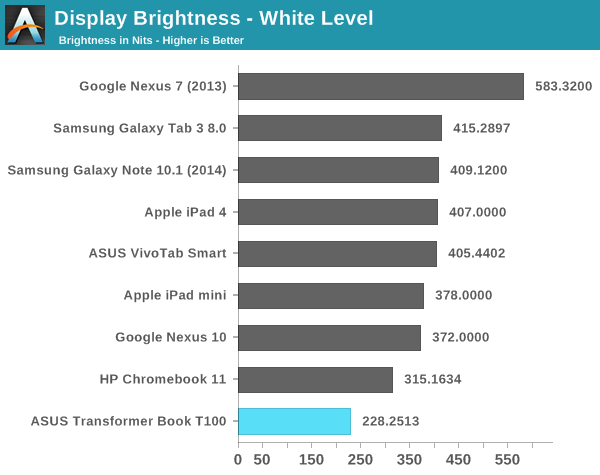
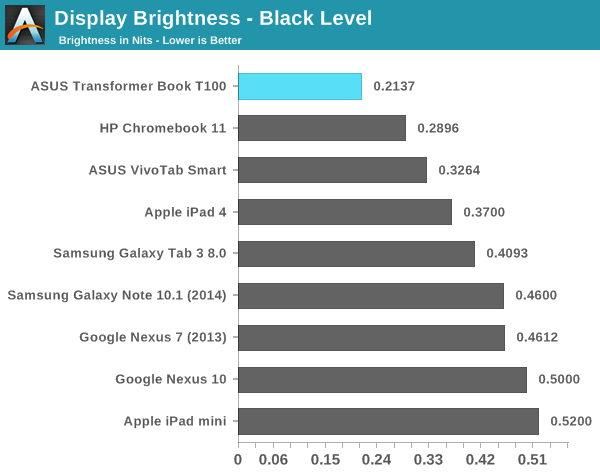

Whether or not any of this is a problem to you really depends on perspective. If we’re limiting our comparison to traditional entry level PC notebooks then ASUS has really redefined what it means to be a $349 PC. If you broaden the comparison to Android tablets and even Chromebooks, the comparison grows more difficult.
Color accuracy isn’t great on the T100. Once again, compared to what you’d traditionally get from a Wintel PC at this price point it’s amazing. Compared to the Chromebook 11 we recently reviewed at $279 however, the T100 needs some work.
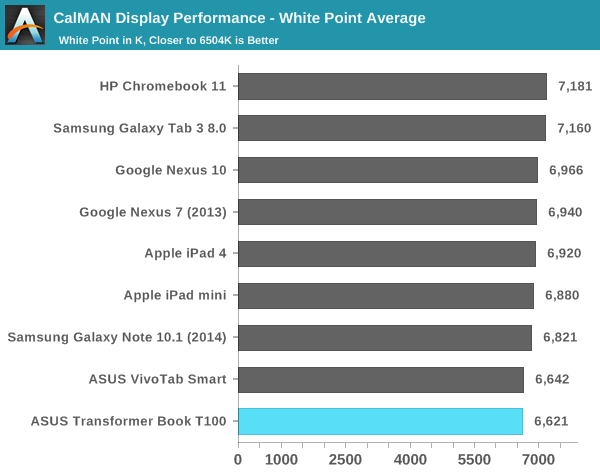
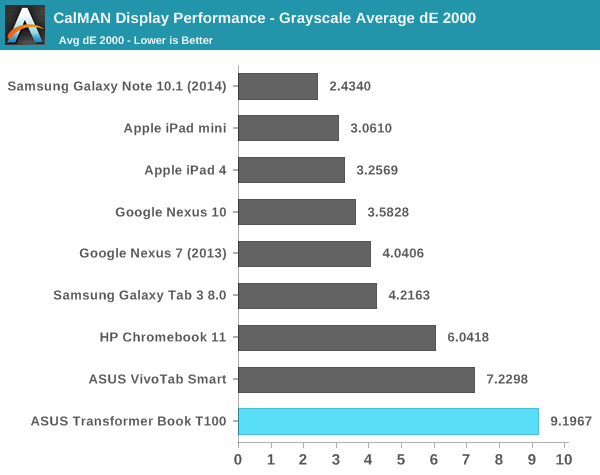
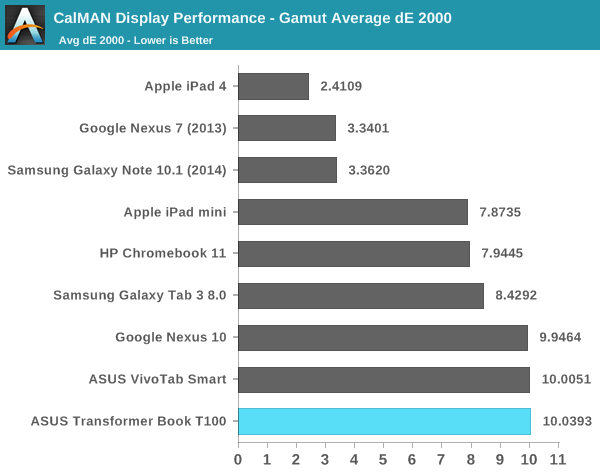

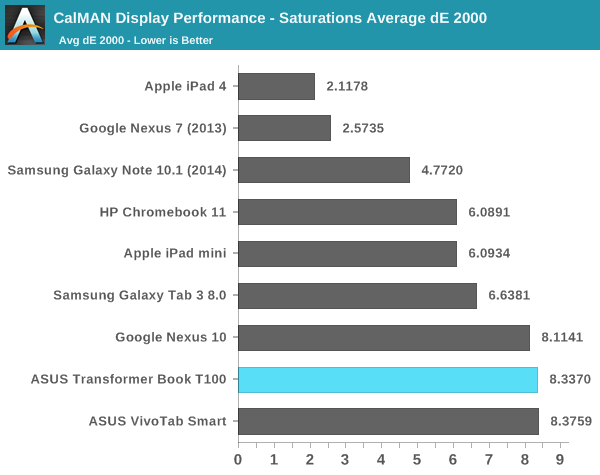



It’s definitely not a bad display, it just doesn’t live up to the expectations of some other low cost devices we’ve seen lately (e.g. 2013 Nexus 7, Chromebook 11). The charts below show you the stark difference between what we're expecting to display and what the T100 actually displays:
There's a green hue to all of the white/grays, and the other colors are just off. Users definitely benefit from the viewing angles of IPS but the T100 needs calibration.













158 Comments
View All Comments
Nagorak - Friday, October 18, 2013 - link
They both include the dock. I wish they would sell a cheaper version without the keyboard, at least as an option.AsusJake - Sunday, October 16, 2016 - link
that's the thing and I know I'm like 3 years ahead of this article, the asus t100 is not a TABLET. its a 2in1 hybrid. its a compact laptop with a removable touch screen. the other devices are just bs tabletsDrunktroop - Friday, October 18, 2013 - link
Battery Life seems acceptable, at least it stayed more or less the same as Clover Trail and being quicker at the same time.However, 2GB RAM is quite concerning here, I personally use a ThinkPad Tablet 2 at school,
which can use 1.8GB RAM with just OneNote & IE & some PDF documents.
Using Bay Trail as 32-bit SoC with 2GB RAM & Windows is not a good idea IMO,
it is not that sufficient by today standard.
ricardodawkins - Friday, October 18, 2013 - link
then buy something with 4GB of RAM or that can be upgraded. This is a 350.00 tablet.popej - Friday, October 18, 2013 - link
I agree, 2GB for Windows hardware is substandard. My 3 years old netbook supports 2GB.AsusJake - Sunday, October 16, 2016 - link
3 years later I'm still using an asus t100 now with windows 10 64 bit.... has ran and continues to 3 years after this article . ive trashed atleast 6 tabletsKhato - Friday, October 18, 2013 - link
Out of curiosity, does the Intel Power Gadget - http://software.intel.com/en-us/articles/intel-pow... - work with Baytrail? Would be quite interesting to see what it reports for package power under the various workloads if it does.Penti - Friday, October 18, 2013 - link
This is a good example why Intel's approach of really low-end devices succeeds and why Microsoft's Windows RT attempts fail. Intel gets ~30 USD, Microsoft still gets a fair share of licensing money but the user gets a full 2013 Home edition suite including damn macro/vba-support that RT doesn't provide. It supports connected standby (Surface 2 don't), but I would wait till these devices run 64-bit Windows. It does show that when they run the exact same platform and Metro is basically just the start screen that is still powered by Win32 underneath it does make RT entirely pointless. It has still better battery life than first gen RT-devices. Dock is obviously an necessity for all the Win32 apps this thing is suppose to runjhoff80 - Friday, October 18, 2013 - link
" It supports connected standby (Surface 2 don't)"Surface Pro 2 doesn't. Surface 2 (and the Surface RT, for that matter) will of course support Connected Standby.
As for macro and VBA support, it might be useful to you, but how common is that stuff in general? Seems pretty rare these days to me.
Krysto - Friday, October 18, 2013 - link
Could do without the sensationalist title.